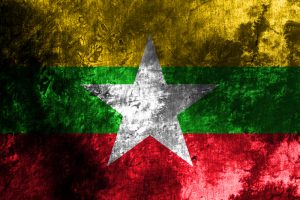The National Unity Government of Myanmar (NUG) has released the grisly details of a massacre allegedly committed by the Myanmar military’s Light Infantry Division (LID) 99. Combined with other reports, the NUG has said that at least 37 people were tortured, mutilated, and killed by junta personnel.
At a press conference held on March 6, victims testified to the types of crimes inflicted in Tadaing village, a cluster of about 80 homes, that occurred between February 28 and March 2 in the Sagaing Region of northern Myanmar.
Victims told the NUG leadership that the brutality inflicted by Myanmar’s military, also known as the Tatmadaw, had exceeded the savagery for which the Islamic State was infamous in the Middle East in the mid-late 2010s.
In response, the NUG has asked the International Criminal Court to expand its current investigation into the slaughter of the Rohingya along the Bangladesh border area to cover Myanmar’s territory, which it said would be consistent with the NUG’s declaration under the Rome Statute.
“Relevant ministries are collecting information about all the crimes committed by the terrorist army, including mass killings, war crimes, targeted attacks, killings of civilians, looting, and destruction of people’s livelihoods and property,” it said.
The NUG also wants countries and international bodies to expand existing sanctions against the Tatmadaw, which is led by Senior Gen. Min Aung Hlaing, including direct bans on imports of arms, munitions, dual-purpose technology, aviation fuel, and equipment for the manufacture of war materiel.
Myanmar Now described Tadaing as “the scene of one of the worst massacres” since the military seized power two years ago and that such crimes had reached “a new level of savagery.”
The dead included 20 resistance fighters and 17 civilians who had been marked as “terrorists” by pro-junta media outlets and been shot in the back of the head. Their bodies were then decapitated and dismembered.
Of the resistance fighters, it was documented that 47-year-old Kyaw Zaw was butchered and the NUG, which provided graphic photos, also added: “The Myanmar military left his internal organs displayed on his body.”
The civilians included the elderly, women (who were also raped), children, and the disabled. All the killings were blamed on LID-99, a detachment that has become known as the “Ogre Column” among locals.
Another three civilians were killed in a raid on March 5 in the Sagaing Region. More than 100 villagers were also detained and six people were seized, among them the senior monk Sayadaw Agga Wuntha, leader of the Pyigyitagon anti-dictatorship strike group.
Their whereabouts were unknown as fighting intensified in Sagaing, but sources say there have been unsubstantiated reports that three monks were killed in Pinlong in Shan State and further air strikes were launched in Kayin State along the Thai border over the weekend.
The Tadaing massacre occurred as Volker Türk, the United Nations High Commissioner for Human Rights, accused the military of sharply escalating its use of arson as a weapon against civilians. “Satellite images confirm that numerous incidents have involved the destruction of entire villages, while other villages have been set on fire on multiple occasions,” he told the 52nd Session of the U.N. Human Rights Council.
“Particularly in Sagaing Region, northwest of Mandalay, we continue to receive daily reports of new incidents, with soldiers reportedly moving from village to village, looting and then setting fire to homes and farms.”
He said people who were unable to flee risked being burned to death. Those who did escape – more than 1.3 million people have been displaced since the coup – faced destitution.
Overall, credible U.N. sources have accounted for at least 2,947 civilian deaths by the military and its affiliates since the military ousted an elected government in early 2021. This included 244 children – but the actual number is expected to be much higher.

































